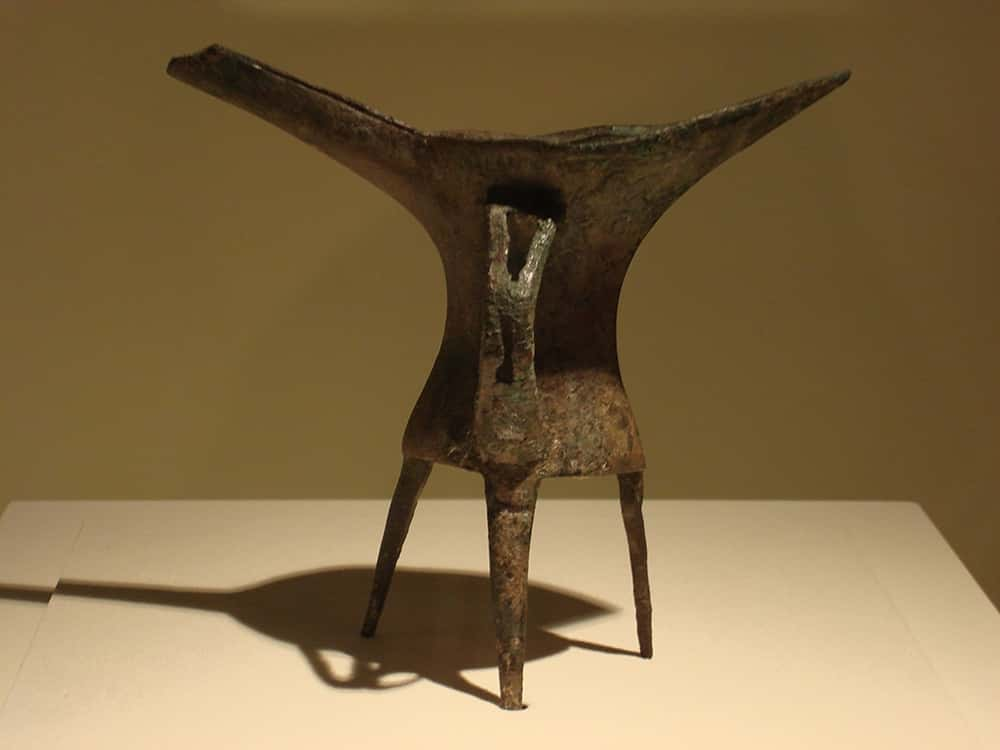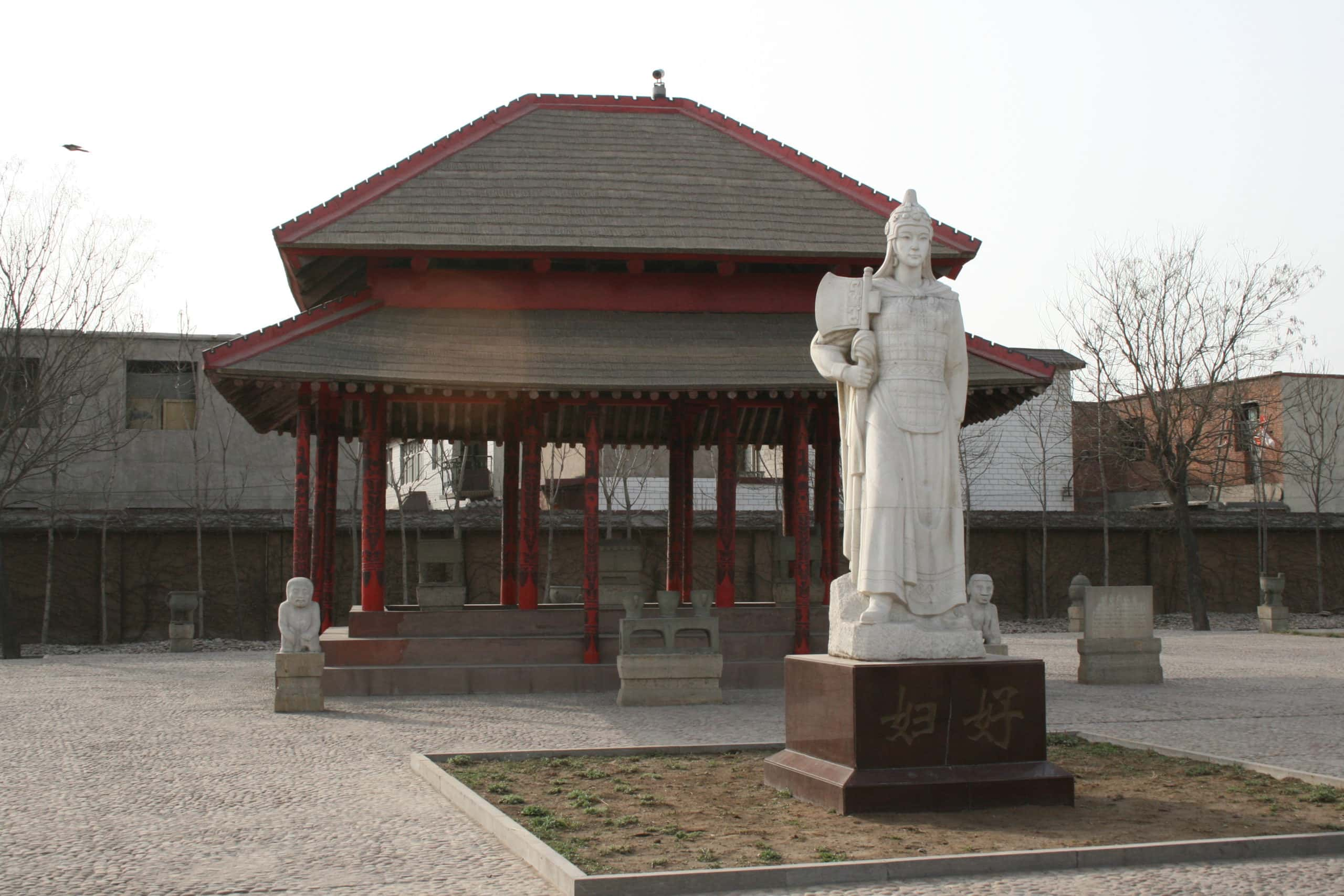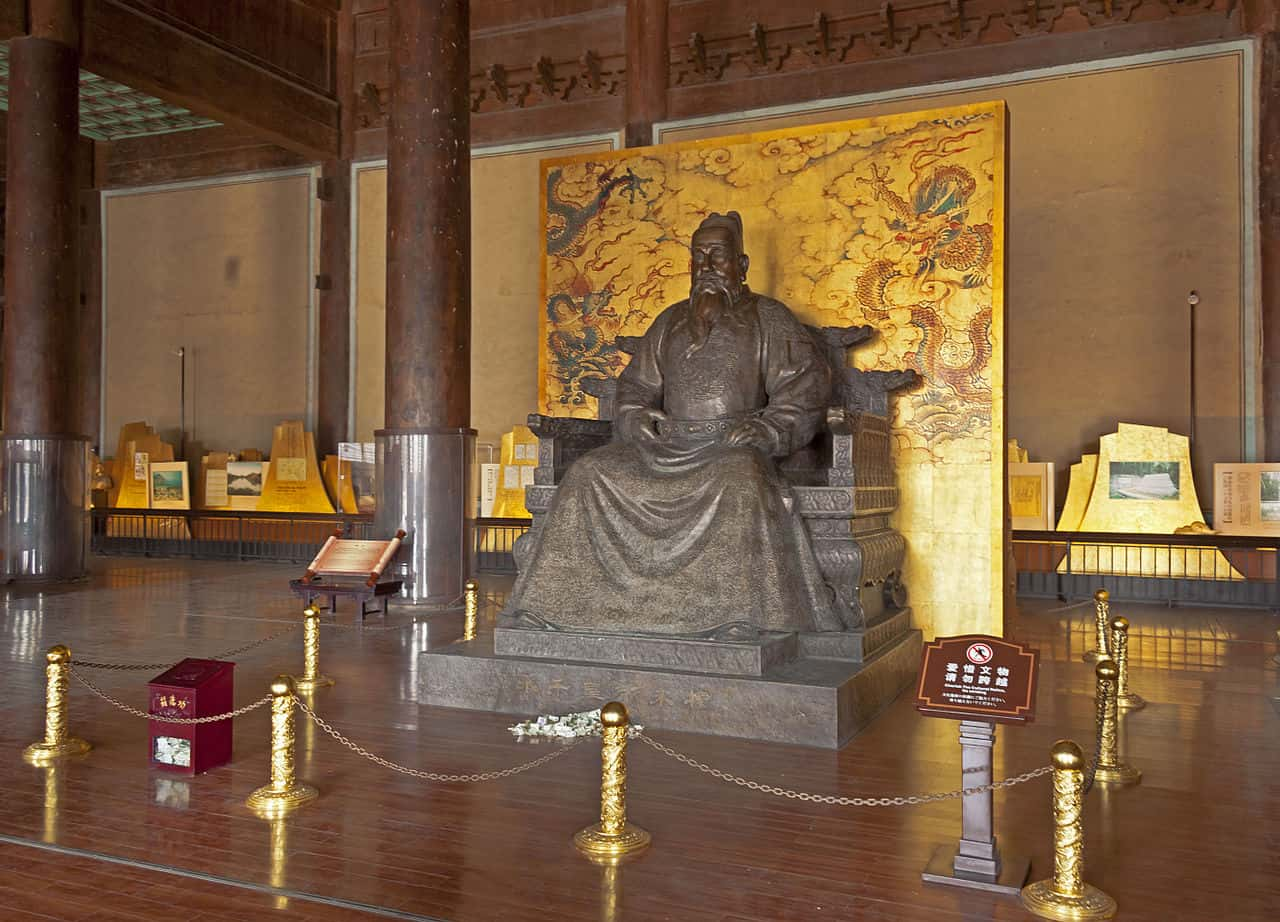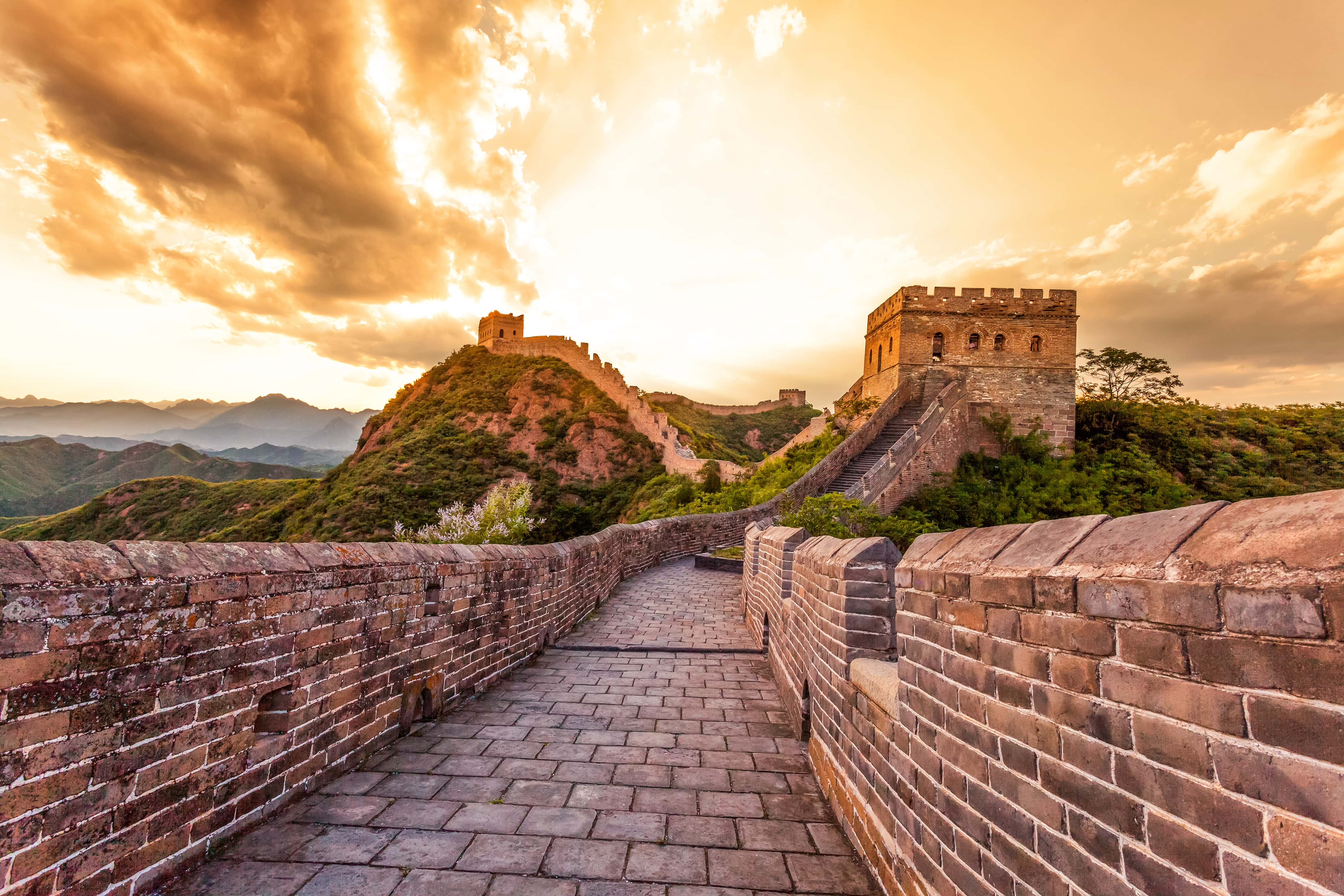"If officials of the imperial court do not behave properly, how can you ask ordinary people to behave properly?"
—Emperor Shizong of Jin
Chinese history is, in many ways, the history of the world. Of all nations on Earth, the Chinese boast one of the longest continuous histories as a people—as well as one of the most diverse and engaging. Indeed, in one form or another, there has been an entity similar to modern China for thousands and thousands of years.
But while today's China becomes a more powerful player on the global stage, its historical influence over world affairs has waxed and waned over the years. That relative instability, combined with various other factors, has led to a strange amount of disinformation or disinterest in Western nations when it comes to Chinese history. Many otherwise well-educated and well-informed citizens of the world know next to nothing about the powers that shaped (and continue to shape) this massive nation.
So what sort of men and women have ruled China over the years? Who were some of its best and worst emperors, and how did they leave their mark on the world? Read more about them in these 42 facts.
Chinese Emperors Facts
42. Long-Lasting
Depending on how you count them, there have been at least 21 different dynasties that have ruled, at least in part, the land we currently call China.
These dynasties stretch from around 1600 BC to 1911 AD. That's no flash in the pan! And that amount of longevity can present certain challenges for anyone looking to learn more about Chinese culture. After all, any empire which has existed for so long will have no doubt gone through many phases, many cultural moments.
As with any nation on Earth, it's worth remembering that China (and Chinese history) is not one single, monolithic entity. It is the cumulative story of the countless millions who have made the country home.

41. Did It Exist?
Each of those 21 dynasties we mentioned left a mark on the land and the culture of modern China. They are remembered and studied by historians, archaeologists, and other experts. They're stories and influence are, for the most part, inescapably factual.
But there may well have been another dynasty. One that exists primarily in legend, myth, and oral history.
The Xia Dynasty is said to have ruled China for 500 years, until about 1600 BC. But evidence of that claim is hard to dig up. Literally. Because a cohesive system of writing did not appear in China until well after the Xia Dynasty is supposed to have existed, the only possible record of their influence must be found in the archeological record. And when people have lived in one place for so long, digging up the remains of a civilization from 4000 years ago gets incredibly tricky.
Imagine going back to a sandbox you played in as a 4-year-old and trying to find some piece of evidence that you were there before. Then multiply the difficulty of that task by a factor of about a billion. That's why the Xia Dynasty, at least for now, has to be considered to only a story. The evidence just isn't there.
Yet.
40. We’re Not Gonna Take It!
One aspect of the Xia dynasty which has been preserved (at least in the writing of those who lived long after) is the terrifying rule of its last emperor.
Xia Jie was said to be pitilessly cruel and indulgent in his own selfish desires. He was said to ride his advisors as if they were horses. His social manner was crude and unnatural. And it's even claimed that ordered the construction of a small lake, filled with wine instead of water, into which he also dumped men and women for who knows what end (we have some guesses though).
Jie's rule was so intolerable that he was eventually overthrown by a man named Tang, who founded the Shang dynasty. The legend of Xia Jie is so complete, in fact, that the Chinese continue to use his name as a shorthand for a necessary change of leadership due to cruel tyranny.
Sounds like a heck of a legacy...
39. Keeping the Family Name Going
Of all the dynasties in Chinese history, the Shang Dynasty holds the claim to the most emperors. 30 men ruled as Emperor during the Shang era.
38. Marco!
Everything changed for China when it was overrun by Mongol armies under the leadership of Genghis Khan. The Chinese states were conquered and defeated in a process which continued after the Great Khan’s passing. His sons and grandsons continued the conquests, but one grandson has cemented his name in both Chinese and Mongolian history. That grandson was Kublai Khan; in 1271, he founded the Yuan Dynasty (though it wouldn’t rule all of China until 1279). The Yuan emperors would lead China until 1368, nearly a hundred years later.
37. The First Ancestor of Yuan
Kublai Khan went the whole nine yards with establishing his position as Emperor of China. After his passing, he was given a "temple name," which consisted of an adjective combined with either the word "zu" (forefather, usually used for the founder of a dynasty) or "zong" (ancestor, which was given to the rest of a dynasty's emperors). In Kublai Khan’s case, his temple name was Shizu of the Yuan Dynasty.
 Wikimedia Commons, A. Omer Karamollaoglu
Wikimedia Commons, A. Omer Karamollaoglu
36. Can’t Keep a Good Thing Going
As time passed and the Mongol descendants fell to infighting, the vast empire that was built and ruled by Genghis Khan eventually fell to pieces. It divided and sub-divided into portions which were ruled by various factions, such as the Golden Horde, who eventually broke off from the Great Khan’s control.
But all along, Kublai Khan (along with the rest of the emperors of the Yuan Dynasty) maintained their status as Great Khans of Mongolia and China... until they were overthrown.
35. The Naughty King
The last emperor of the Yuan Dynasty was Toghun Temür, also known as Emperor Shun. Just a teenager when he took the throne, Shun isn’t remembered very highly in the long history of Chinese emperors. For one thing, he waged a conflict against the Han people in China, ordering people to be tagreted based on the type of surnames that they had.
34. No More of This
Eventually, a peasant uprising became powerful enough to challenge the Yuan Dynasty. An army led by Zhu Yuanzhang also helped speed along the downfall of the Yuan Dynasty. Emperor Shun managed to escape China, retreating into modern-day Mongolia, where he passed in 1370, two years after his dynasty was overthrown. Meanwhile, Zhu Yuanzhang founded the Ming Dynasty as the Hongwu Emperor.

History's most fascinating stories and darkest secrets, delivered to your inbox daily.
33. Maybe He Can Build a Better Throne
In 1620 AD, the 15-year old Zhu Youxiao became Emperor Xizong, the 15th emperor of the Ming Dynasty.
Emperor Xizong’s rule was hampered by his lack of responsibility, his blind faith in the corrupt administrator Wei Zhongxian, and his illiteracy. Bizarrely, however, Emperor Xizong was good at one thing; he was reportedly a very skilled and talented carpenter.
Not that carpentry isn't a beautiful and valuable thing in its own right. We're sure his chairs were absolutely wonderful, and all the tables in the palace stood absolutely level. But when it comes to choosing a ruler, you really want a ruler who's more concerned with developing a cabinet of wise and trusted advisors, as opposed to literally building cabinets. Lots and lots of very nice furniture does not make for a fully-functioning nation-state.
If only all that China needed was a really nice wood grain.
32. Slacker
Emperor Zhu Yijun spent 48 years on the Chinese throne. Unfortunately for those hoping for a competent ruler, Zhu Yijun spent a whopping 28 years away from the royal court in that time.
31. Life’s a Sport…
Speaking of lazy emperors...
Emperor Tianzuo of the Liao Dynasty was not at all interested in administration. Rather, Tianzuo was obsessed with his personal pursuits, such as hunting and the game of polo, which was the ultimate sport of the idle wealthy even then. Tianzuo preferred to leave administration to others like his brother-in-law while he indulged himself.
30. … Until it Isn’t
All that idleness and ineffective rule may have been fun while it lasted, but it didn't end well for Tianzuo. Eventually the lack of diligent rule, as well as rampant corruption amongst the men he'd hired to run the nation for him, left his dynasty hopelessly vulnerable. He also turned a blind eye to the Wanyan clan of the Jurchens, who were growing in strength.
Things got more and more unstable until 1124, when the emperor was taken prisoner by his enemies. After his passing, his body was trampled by horses, presumably as an insult, but also serving as an ironic comeuppance (remember the polo?). Tianzuo’s dynasty went with him, and the Wanyans formed the Jin Dynasty when they took over.
And thus came the end of the Liao Dynasty. We're sure his ancestors were very proud.
29. Just One?
What do the Xin Dynasty and the Eastern Wei Dynasty have in common? Both of them only had one emperor to boast of. Sometimes things don’t stick around.
28. Did He Cut Out His Eyes Too?
One of the most brutal and hated emperors in Chinese history was Yang Guang, the second emperor of the Sui Dynasty. His climb to the throne wasn’t natural; it is widely believed among historians that Yang offed his father to get him out of the way. Given that Yang took his father’s former concubines for his own, it’s safe to say that Freud would have wanted a few sessions with him!
27. Spending Money Like It’s Going to Rot
Speaking of those concubines, Yang Guang liked to have particularly bawdy adventures with them, even when he was taking grand tours of his empire. Such events naturally cost money, as did his more ambitious projects like repairing the Great Wall or launching three conflicts against the kingdom of Goguryeo in Korea. This meant very heavy taxation on his subjects, and to add insult to injury, his campaigns against Goguryeo ended in complete failure.
26. An Ominous End
Emperor Yang Guang spent a significant part of his reign dealing with uprisings by people who disagreed with his financial plans, among other things. Eventually, a coup led by one of his generals was successful, and the dethroned emperor ended his life by hanging himself in 618.
25. Golden Song
Much has been said about the Song Dynasty and its time of great prosperity for China. During this period, China became the richest nation in the world, and the prosperity allowed its population to grow up to 100 million people. Unfortunately for China, the Song Dynasty was eventually defeated and overthrown by the Mongols (remember them?).
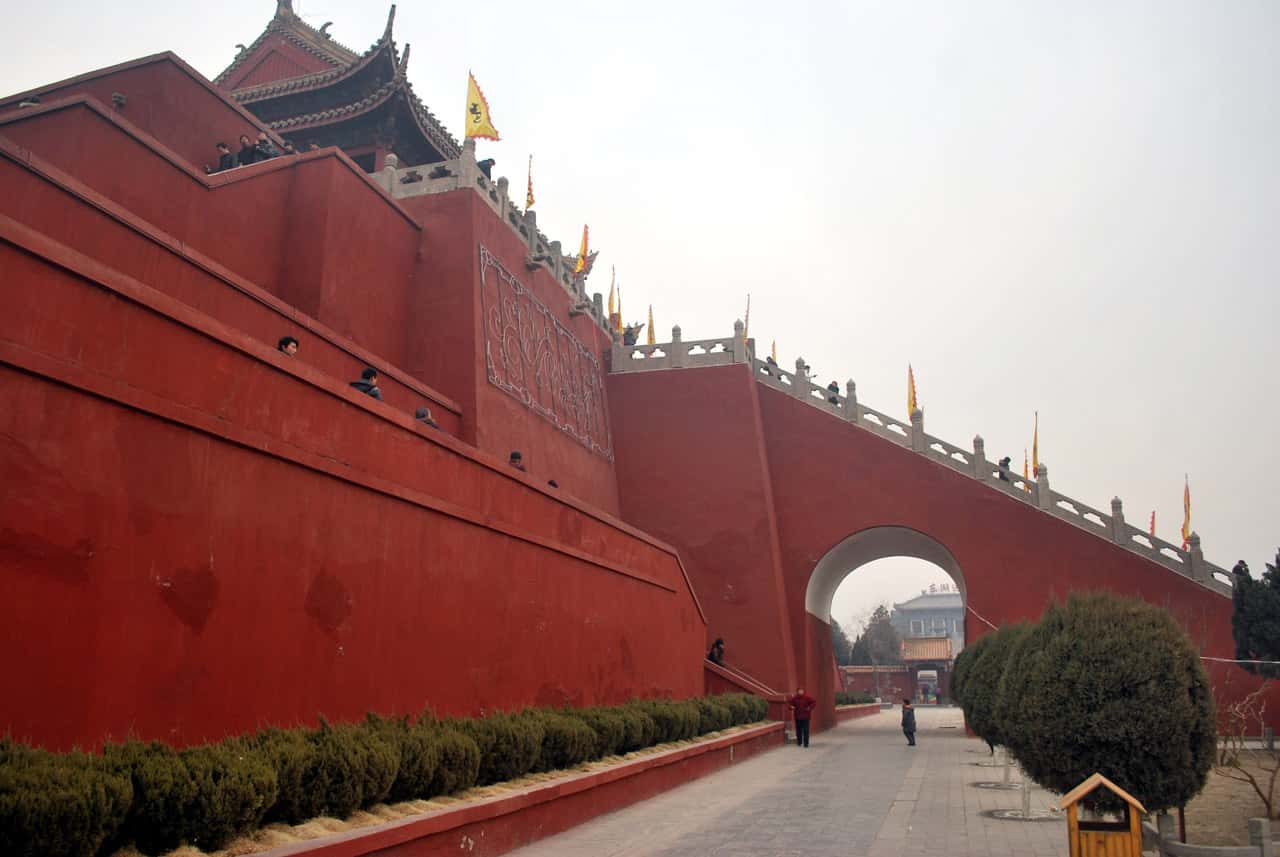 Public Domain Pictures
Public Domain Pictures
24. Costly Conquest
Emperor Wu of Han has a mixed reputation for his despotism, increased paranoia in his old age, as well as for depleting the royal treasury on territory expansion efforts. However, his campaigns did pay off, as he ruled over more land than anybody else in the Han Dynasty.
23. A Footnote in History
The shortest reign of any Chinese emperor was Emperor Shang of the Han Dynasty. His rule lasted from 105-106 AD, before he passed at the tender age of two years old.
22. Praise for the Written Word
The Tang Dynasty, which began in 618 AD and ended in 906 AD, was considered a high point in the history of Chinese literature. Two of China’s most celebrated poets, Li Bai and Du Fu, lived during this time period. The Tang Dynasty also produced the earliest dated printed book, titled Diamond Sutra. We hope the copyright is still good for the author’s descendants!
21. Bloody-Minded
Ming Chengzu, also known as Zhu Di or the Yongle Emperor, started his reign from a rather sinister perspective: in the tradition of such rulers as Richard III and Uncle Scar, Chengzu seized the Chinese throne from his nephew. Not only that, Chengzu was a ruthless ruler who began the tradition of offing deceased emperor’s concubines so that they might join him in the afterlife, willingly or not.
20. Explorers, Go Forth!
On the flip side, the Yongle emperor was also responsible for the increased presence of the Chinese navy, sending ships across the world on diplomatic missions. After “reaching as far as Africa,” the new trade routes and discoveries allowed for much economic growth in China. The treasure ships sent on these voyages were some of the largest sailing vessels of all time, purportedly reaching as long as 450 feet! Not only that, Chengzu was responsible for making Beijing China's capital city, which led to the construction of the iconic Forbidden City.
19. Unworthy of Ruling
It seems like everything that Emperor Yang of Sui touched fell apart. His invasion of southern Vietnam resulted in thousands of his men perishing of malaria, turning their success into a Pyrrhic victory. Hundreds of thousands more starved or met their ends in ambushes when the emperor tried to personally lead an invasion of the Korean peninsula, failing miserably in the process.
On top of that, Sui Yang Di’s orders to reconstruct the Great Wall was so disastrous that six million workers perished while on the job. No wonder a coup finally offed this guy.
18. Talk About Far Reaching
A notable measure of Emperor Taizong’s success was the fact that his empire stretched across not just modern China, but also parts of Vietnam, Mongolia, and even stretching as far as modern-day Kazakhstan!
17. The Thinking Man's Emperor
One practice which set Emperor Taizong apart from most other Chinese emperors was his willingness to deal with opposing viewpoints. Taizong used a measure of self-control to prevent himself from going overboard with his absolute powers, relying on logic, rationalization, and science instead of divine messages or superstitions to influence his decisions.
16. Come Back Together or Not at All!
Emperor Kangxi of the Qing Dynasty ruled for 61 years, between 1661 and 1722, which makes him the longest-ruling emperor in Chinese history. Such an achievement meant that Kangxi, despite being recorded as a benevolent emperor who brought long-lasting stability to China, had to occasionally show an iron fist.
This was noticed especially in the military, where Kangxi wanted to instil a sense of unity amongst his men that they would fight together. As a result, any footmen, or even commanders, who came back from a battle alone were punished with their lives.
15. Sounds Like a Swell Guy
Despite these harsh rules and his many campaigns, Emperor Kangxi has been remembered quite favorably by history. Between the seventh and 60th years of his reign, he more than doubled the amount of currency held in the Royal Treasury. He also recruited many scholars to compose a dictionary of Chinese characters, which has become known as the Kangxi Dictionary. Much praise was given to the emperor’s work ethic, as he took a direct hand in ruling, even personally leading a campaign. Sure sounds better than the polo guy.
14. Intolerant of Intolerance
Another aspect of Kangxi’s reign was his interest in the West, which by this point was in the grips of the Age of Exploration. Kangxi wanted to bring in the technological advances that the West had achieved, which he did by inviting Jesuit missionaries into his empire. Kangxi became the first Chinese emperor recorded as playing a Western musical instrument when he learned to play an old instrument called the spinet. However, while Kangxi issued an edict which ensured religious tolerance towards the Catholic missionaries, things became complicated when Chinese Christians were told that they could not practice Confucianism at the same time as their Christian faith. When the Pope sent messages enforcing this message, Kangxi withdrew his support of the missions within his empire.
13. Social Climber
In January 1368, the leader of a large rebel army succeeded in overthrowing the Yuan Dynasty, decrying their Mongolian ancestry. This leader, the son of poor farmers, declared himself Emperor Hongwu of the new Ming Dynasty. This dynasty, determined to throw off the Mongolian yoke once and for all, ruled a united China for more than three hundred years.
12. They’re Out to Get Me!
One downside to Emperor Hongwu, however, was that he had a rather sore spot when it came to the upper classes, who didn’t necessarily make a good impression of themselves to the peasants. Now that one of those peasants was an Emperor, things changed in a big way. Hongwu suspected these nobles of disrespecting him (jury’s out on how true that was), and he enforced his rule with purges and executions of those suspected of treason.
11. So Many People
During the time of the Qing Dynasty, Beijing was the biggest city of the world, with over a million inhabitants. Not only that, the population of China was 300 million in 1799. At the time, this comprised of a third of the entire world’s population! It was the highest proportion that China has ever achieved in regards to global population size.
10. Privilege With a Capital ‘P’
Emperor Liu Shan was born with a golden spoon in his mouth, so to speak. His father had established the state of Shu Han in the time when China was divided into three kingdoms (Wei, Wu, and Shu Han). Even with reliable advisors and a good starting point, Liu Shan’s incompetence and his preference to delegate while he enjoyed luxury led to him being forced to surrender to the ruler of Wei state in 263 AD. His infant name, “Adou,” is used in China to this day as a metaphor for people who are born with all the opportunities in life but can’t do anything except squander them.
9. He’s on the Exam!
Li Shimin, who’s better known as Emperor Taizong of the Tang Dynasty, has gone down as one of the most celebrated emperors in the history of China. After his passing in 649 AD, there was peace and prosperity for a full century. Even after that, Emperor Taizong’s story was required study material for crown princes so that they might live by his example.
8. Lonely From the Start
In 1908, Pu Yi was chosen to be emperor by Empress Dowager Cixi when she was on her deathbed and he was just under three years of age. From there, he was separated from his family and placed inside the Forbidden City. He would spend the next eleven years living inside the elaborate palace, forbidden to leave, even after he’d abdicated all his power and was an emperor in name only. He was the subject of the 1987 film The Last Emperor.
7. This Story Has a Happy Ending
After receiving a Western education, marrying, and being used as a pawn by the Japanese forces that took power in China, Pu Yi was eventually captured by the Soviets and Chinese Communists. After a period of internment and re-education, Pu Yi was allowed his freedom in the form of a humble existence. Reportedly, he found more joy in the simple life of being a gardener than he ever did as China's final emperor.
 The Last Emperor (1987), Columbia Pictures
The Last Emperor (1987), Columbia Pictures
6. Someone Create AA, Quick!
While Emperor Wenxuan of Northern Qi (also known as Gao Yang) had a very promising start to his rule, it became undone by his rampant alcoholism. His behavior and antics were said to be so extreme that one night, he offed one of his mistresses, and then boasted about it (with show and tell) at a party the next day.
This became so regular with him that extreme measures were taken to appease it: to keep him from offing anyone important, prisoners would be provided as convenient scapegoats for the emperor to kill when he was particularly inebriated.
5. What a Woman!
Only one emperor of China was female (in that a woman ruled China by virtue of her own authority, rather than a husband or son), and her name was Wu Zetian. After being the consort of Emperor Taizong, she later seduced Emperor Gaozong and produced two children with him. After Gaozong became incapacitated with sickness, Wu Zetian took over the administration. In 690 AD, she became the Empress of China in name as well as practice. She’s even credited with her own Dynasty, known as the Second Zhou Dynasty, though it went with her.
4. Starting Late
Aside from holding the record of being the only woman to wear the yellow robes of a Chinese Emperor, Empress Wu was also the oldest person to ascend the throne of China. She was already 67 when she began her rule, and she would reign for another thirteen years.
 The Empress of China, Dimsum Entertainment
The Empress of China, Dimsum Entertainment
3. Written by Nobody
Empress Wu has gone down as a very polarizing figure in Chinese history. Due to her purges of the royal family, she has been accused of being a power-hungry murderer. Others, however, defend her for playing the same game that a lot of the other emperors were playing, and the odds were stacked against her because she was a woman.
Interestingly, Empress Wu made sure that when she was entombed after passign, a stele would be erected which uncharacteristically had no inscriptions on it. This "Wordless Stele" stands in a strangely symbolic position for the future generations to judge her reign as they see fit.
2. One of the Greats
One of the most remarkable emperors of China was Qin Shi Huang, the first Emperor of the Qin Dynasty. Qin Shi Huang is often called the First Emperor of China, since he unified the Chinese states into one after years and years of conflict. The very existence of China to this day can be credited to Qin Shi Huang’s centralizing and stabilizing of the states.
In the process of uniting these states together, he also began the process of unifying the various defensive walls built for protection. This laid the foundation for the Great Wall of China. Not only that, the Emperor arranged for the construction of a massive army of statues to guard him in the afterlife. These life-size sculptures form the Terracotta Army, which still draws tourists to this day.
1. It Comes with a Cost
Unfortunately, there was a very dark side to the reign of Emperor Qin Shi Huang. His rule over China was won in bloody contest against those who opposed him, and even after he secured his empire, he applied brutal measures to anyone or anything that opposed him. As a result, his reign was marked by book burnings, as well as the live burial of scholars. Safe to say that Qin Shi Huang stands as clear proof that nobody’s legacy is simple, and there is always another way to look at someone’s life.
Sources: 1, 2, 3, 4, 5, 6, 7, 8, 9, 10, 11, 12, 13, 14, 15, 16, 17, 18, 19, 20, 21, 22, 23, 24


